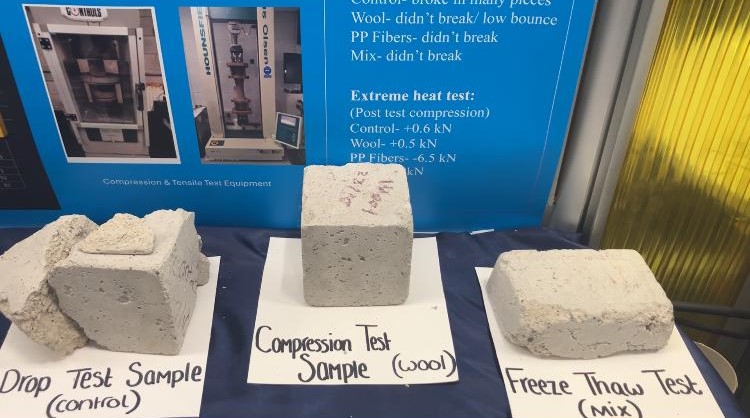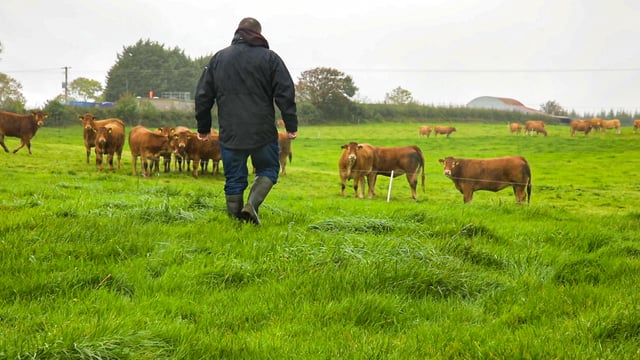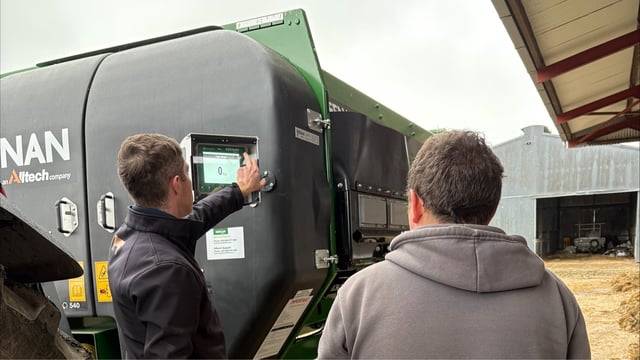Sligo students to take sheep wool and concrete project 'large scale'
Aoife Fadian and Jessica O’Connor from Ursuline College, Co. Sligo have made plans to take their sustainable sheep wool project "large scale", after securing a runners-up group position at the BT Young Scientist and Technology Exhbition (BTYSTE).
The Transition Year students from Finisklin in Co. Sligo are continuing to research how sheep wool can be used in the concrete industry as a strengthening material, through their project called 'Sheep Strength'.
The students developed the idea for the project from first-hand experience on Aoife's family farm in Achill, where she said her family struggles to sell wool and much of it goes to waste.
“It is selling at about 10c/kg, even if it's selling at all. Farmers all around Ireland are really struggling with what to do with it," Aoife said.
While always trying to prevent excess wool from going to waste, Aoife's father used a layer of wool with concrete on top to fill a large pothole in the yard - "it was a win-win, get rid of the sheep wool and fill the hole," Aoife said.
From the simple solution, the students began researching how sheep wool could be used in the concrete industry instead of polypropylene, which is generally used to prevent cracks in the product.
They developed four different concrete mixtures to conduct a series of indicative tests aimed at assessing durability.
The first sample featured concrete reinforced with polypropylene. Another mixture incorporated sheep wool and concrete, while the third mixture used a hybrid of both wool and polypropylene. A final mixture contained a control of plain concrete.
From there three tests were carried out, including a sub-test specifically designed for wet concrete, which Jessica explained "assesses the workability and overall quality of the concrete".
A drop test was also performed to evaluate how strong the concrete was upon being dropped. Then a compression test was also used by by applying a certain load to the concrete until it weakened.
This test was performed by using a specific machine, after the students gained access to equipment from Atlantic Technological University (ATU) Sligo.
They also performed weathering tests on the concrete to see how each mixture could withstand water and temperatures.
"It was clear that the sheep wool mixture with concrete performed best overall for strength and durability," Jessica said.
The students have already received much assistance from ATU and their local quarry, Harringtons, however are now seeking more information and support as they plan to further the research, and have asked anyone interested to get in touch.
"We did the project all in small environments, so the next step would be to use a large, real life scale to make sure we are on the right track. Just a couple of things to make sure that it can be commercially used," Jessica said.
They thanked their teacher who advised them through the project and the exhibition, along with the support they received from ATU and their parents for all the help.






